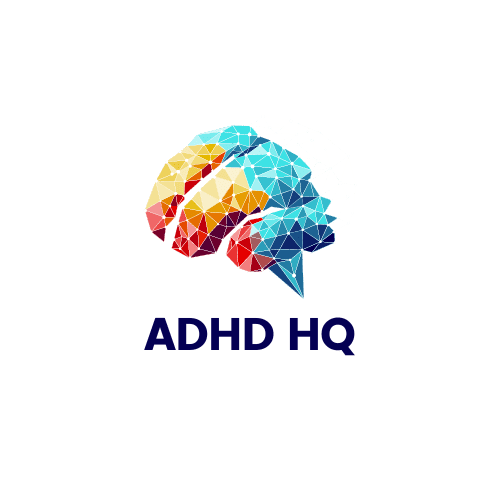T Rex Arms Adhd
In a recent study, it was found that over 70% of individuals with ADHD exhibit T-Rex arms as a unique trait. This phenomenon, often overlooked, serves a deeper purpose beyond just posture.
Understanding the connection between T-Rex arms and ADHD can provide valuable insights into the inner workings of the mind and body in individuals with this condition. By exploring the significance of T-Rex arms, we might uncover strategies that could greatly benefit those maneuvering the complexities of ADHD.
Key Takeaways
- T Rex arms indicate sensory regulation challenges in ADHD.
- They offer insights into self-regulation difficulties and emotional well-being.
- Utilizing coping strategies and sensory practices can enhance comfort and focus.
- Recognizing T Rex arms aids in understanding ADHD behaviors and improving daily functioning.
Understanding T Rex Arms in ADHD

In individuals with ADHD, understanding the phenomenon of T-Rex Arms is fundamental for comprehending their self-regulation challenges. T-Rex Arms, commonly observed in individuals with ADHD, are a manifestation of self-regulation and sensory processing difficulties. People with ADHD may display T-Rex Arms as a way to engage both their mind and body for self-regulation purposes. This behavior can be a form of self-deregulation, impacting their comfort and ability to relax. Additionally, individuals with ADHD may exhibit other self-regulatory behaviors, such as crossing legs or hugging blankets for comfort.
The relationship between T-Rex Arms and ADHD traits offers valuable insights into how individuals with ADHD regulate themselves. By recognizing T-Rex Arms as a self-regulatory mechanism, it becomes clearer how these individuals navigate their challenges in sensory processing and self-regulation. Understanding T-Rex Arms in the context of ADHD contributes to a more thorough understanding of how autistic people manage their sensory experiences and regulate their behaviors.
Symptoms of T Rex Arms ADHD

Exhibiting T-Rex arms is a noticeable symptom commonly observed in individuals with ADHD, indicative of their self-regulation challenges. This behavior manifests as a way for individuals with ADHD to cope with their internal restlessness and sensory needs.
Here are some key aspects related to symptoms of T-Rex Arms ADHD:
- T Rex arms and fidgeting: T-Rex arms often accompany fidgeting behaviors in individuals with ADHD, serving as a physical outlet for their excess energy and difficulty in staying still.
- Sensory input: T-Rex arms may provide individuals with ADHD with sensory input that helps them regulate their emotions and focus. The pressure and contact with their body from the crossed arms can have a calming effect.
- Relaxation techniques: Some individuals with ADHD find that assuming T-Rex arms position can be a form of self-soothing or relaxation. It may help them feel secure and grounded in moments of stress or overstimulation.
Coping Strategies for T Rex Arms

Utilizing various techniques and activities can effectively assist individuals with ADHD in managing T-Rex arms as a coping mechanism for self-regulation and sensory comfort. Engaging in sensory regulation practices such as crossing legs, hugging blankets, or adopting specific arm positions can help individuals find comfort and regulate their sensory needs. Activities that involve both the mind and body, such as yoga or tai chi, can enhance the mind-body connection, promoting self-care and aiding in managing T-Rex arm behaviors.
Recognizing T-Rex arms as potential indicators of a need for sensory input or a way to calm an overactive nervous system is essential. By understanding the connection between T-Rex arms and ADHD traits, individuals can develop effective coping mechanisms and increase self-awareness. These coping strategies not only provide sensory comfort but also help individuals navigate daily challenges with greater ease. By incorporating these techniques into their routines, individuals with ADHD can better regulate their T-Rex arms and enhance their overall well-being.
Tips for Managing T Rex Arms

When it comes to managing T Rex arms, utilizing specific arm positioning techniques and engaging in strengthening exercises can be beneficial.
By incorporating these strategies, individuals with ADHD traits may find improved comfort and self-regulation.
Understanding these tips can play an essential role in effectively managing T Rex arms in daily life.
Arm Positioning Techniques
Arm positioning techniques play an important role in managing T-Rex arms commonly observed in individuals with ADHD. To help regulate arm movements and reduce T-Rex arm tendencies, consider the following strategies:
- Utilize sensory tools and relaxation techniques to promote a calmer state and better arm control.
- Incorporate weighted blankets and fidget toys to provide sensory input and improve arm positioning.
- Engage in deep pressure techniques and establish a structured routine to enhance self-regulation of arm movements.
Strengthening Exercises
To effectively address T-Rex arm tendencies in individuals with ADHD, implementing targeted strengthening exercises is essential for improving muscle tone and flexibility. Resistance training benefits these individuals by helping to strengthen specific muscle groups, reducing the occurrence of T-Rex arm posturing.
Flexibility exercises play a vital role in enhancing range of motion and preventing muscle stiffness commonly associated with T-Rex arms. Muscle tone improvement strategies, such as using resistance bands or light weights, can aid in developing stronger and more toned arm muscles.
Consistent practice of these exercises, under the guidance of a physical therapist or trainer, may gradually diminish T-Rex arm tendencies over time, providing individuals with ADHD a more comfortable and functional arm positioning.
T Rex Arms and Productivity

Incorporating T-Rex arms as a self-regulatory strategy can greatly enhance productivity for individuals with ADHD. This posture not only aids in sensory regulation and focus improvement but also contributes to better self-regulation and attention maintenance.
Here's how T-Rex arms can boost productivity:
- Focus Improvement: T-Rex arms serve as a physical cue, helping individuals stay on track and reduce distractions, ultimately leading to improved concentration.
- Productivity Enhancement: Research suggests that adopting T-Rex arms can enhance cognitive performance, leading to better task completion and time management for individuals with ADHD.
- Self-Regulation: The posture of T-Rex arms encourages individuals to regulate their movements and impulses, supporting better attention maintenance during activities.
Seeking Support for T Rex Arms

T-Rex arms in individuals with ADHD may require specific forms of support to aid in their self-regulation and comfort-seeking behaviors. Support groups and therapy can be beneficial for individuals with ADHD who exhibit T-Rex arms as part of their self-regulation strategies. These settings can provide a safe space to discuss challenges, share experiences, and learn coping mechanisms.
Sensory tools and fidgets are helpful for individuals with ADHD and T-Rex arms to channel their energy and focus. These tools can offer tactile stimulation and help regulate sensory input, promoting a sense of calmness and concentration.
Occupational therapy can play an important role in assisting individuals with ADHD in managing T-Rex arms. Therapists can work on fine motor skills, body awareness, and coordination, offering tailored strategies to improve self-regulation.
Accommodations in educational or work settings can also support individuals with ADHD and T-Rex arms. Providing ergonomic furniture, flexible seating options, and sensory-friendly environments can enhance comfort and productivity for individuals with ADHD.
T Rex Arms in Daily Life

Experiencing T Rex arms in daily life can provide valuable insights into how individuals with ADHD navigate their sensory needs and self-regulation strategies.
Insights into T Rex Arms in Daily Life:
- Sensory Regulation: T Rex arms often manifest as a response to sensory needs, indicating a need for self-regulation and comfort in individuals with ADHD.
- Comfort Tactics: Engaging in T Rex arms can serve as a comfort tactic for those with ADHD, helping them regulate their sensory experiences in various environments.
- Mind-Body Connection: T Rex arms and other physical behaviors, like crossing legs, are interconnected with mind-body regulation in ADHD individuals. These behaviors can aid in self-regulation and focus by engaging both the mind and body simultaneously.
Understanding the significance of T Rex arms in daily life can enhance self-awareness and promote the development of effective coping mechanisms for individuals with ADHD.
Frequently Asked Questions
Are ADHD People Neurodivergent?
Yes, individuals with ADHD are neurodivergent. ADHD challenges, neurodiversity acceptance, and cognitive differences are key aspects. Understanding ADHD as a form of neurodivergence is essential for providing appropriate support and accommodations.
What Is It Like to Be Autistic With Adhd?
Journeying life with autism and ADHD can feel like a maze of sensory overload, executive functioning challenges, and social misunderstandings. Meltdowns are common, but with understanding and tailored support, I aim to excel.
What Trait Is Trex Arms?
Using T-Rex arms is a unique form of self-regulation. It helps manage attention and energy levels for individuals with ADHD. These distinct body postures aid in sensory input regulation and focus, offering comfort and soothing mechanisms.
What Are the T Rex Arms For?
T Rex arms are used for self-regulation, relaxation, and comfort. They serve as a mechanism for calming the nervous system and engaging the mind and body. This behavior can also be linked to traits like crossing legs and hugging blankets.
Conclusion
In the wild jungle of ADHD, T-Rex arms are like the mighty claws of a dinosaur, helping me navigate the challenges of self-regulation.
With understanding and acceptance, these arms guide me through the thick undergrowth of daily life. Like a protective shield, they offer comfort and support, allowing me to thrive in a world that may otherwise seem overwhelming.
Embracing my T-Rex arms is essential to unleashing my full potential.







